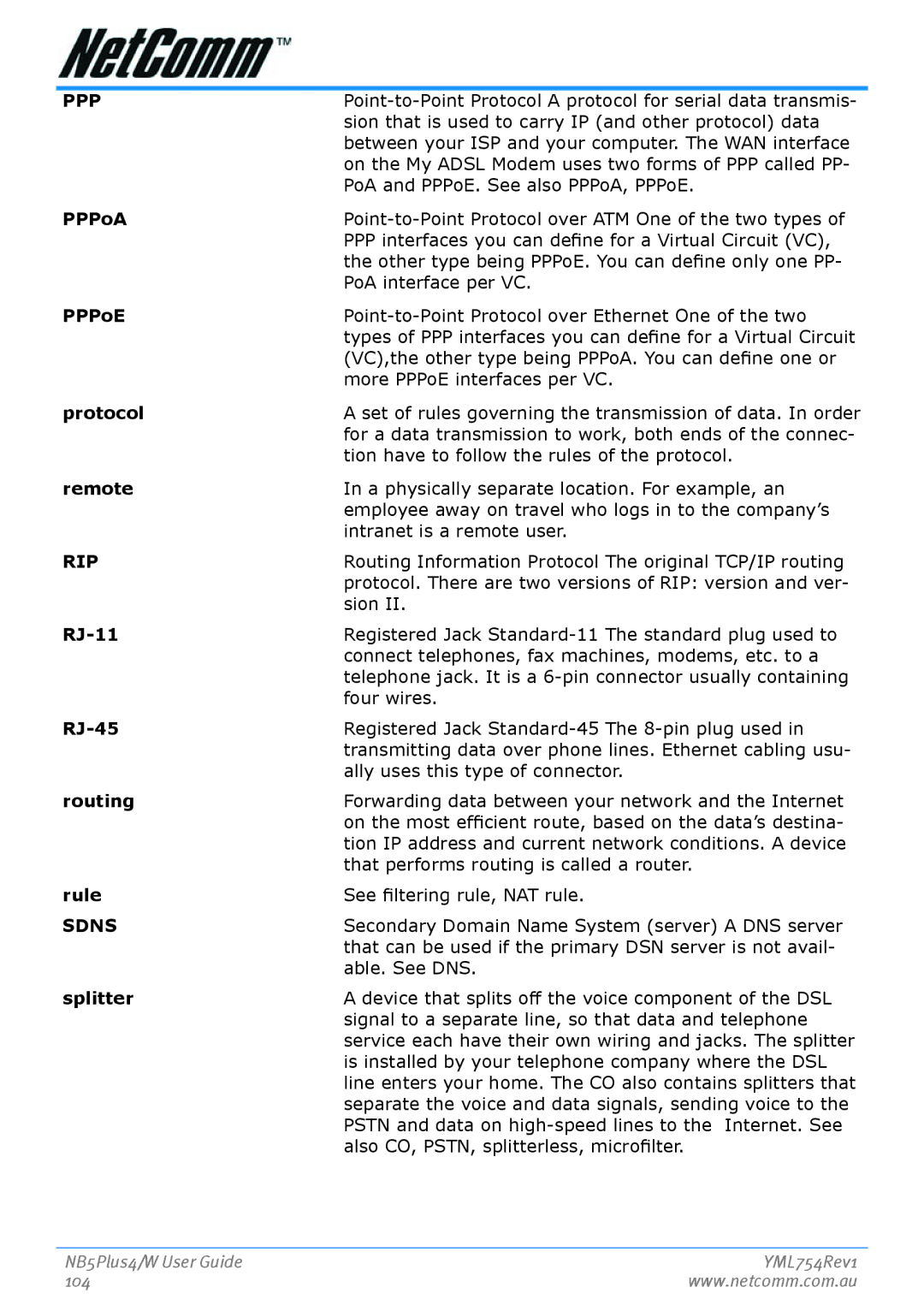
PPP | |
| sion that is used to carry IP (and other protocol) data |
| between your ISP and your computer. The WAN interface |
| on the My ADSL Modem uses two forms of PPP called PP- |
| PoA and PPPoE. See also PPPoA, PPPoE. |
PPPoA | |
| PPP interfaces you can define for a Virtual Circuit (VC), |
| the other type being PPPoE. You can define only one PP- |
| PoA interface per VC. |
PPPoE |
|
| types of PPP interfaces you can define for a Virtual Circuit |
| (VC),the other type being PPPoA. You can define one or |
| more PPPoE interfaces per VC. |
protocol | A set of rules governing the transmission of data. In order |
| for a data transmission to work, both ends of the connec- |
| tion have to follow the rules of the protocol. |
remote | In a physically separate location. For example, an |
| employee away on travel who logs in to the company’s |
| intranet is a remote user. |
RIP | Routing Information Protocol The original TCP/IP routing |
| protocol. There are two versions of RIP: version and ver- |
| sion II. |
| Registered Jack |
| connect telephones, fax machines, modems, etc. to a |
| telephone jack. It is a |
| four wires. |
| Registered Jack |
| transmitting data over phone lines. Ethernet cabling usu- |
| ally uses this type of connector. |
routingg | Forwarding data between your network and the Internet |
| on the most efficient route, based on the data’s destina- |
| tion IP address and current network conditions. A device |
| that performs routing is called a router. |
rule | See filtering rule, NAT rule. |
SDNS | Secondary Domain Name System (server) A DNS server |
| that can be used if the primary DSN server is not avail- |
| able. See DNS. |
splitter | A device that splits off the voice component of the DSL |
| signal to a separate line, so that data and telephone |
| service each have their own wiring and jacks. The splitter |
| is installed by your telephone company where the DSL |
| line enters your home. The CO also contains splitters that |
| separate the voice and data signals, sending voice to the |
| PSTN and data on |
| also CO, PSTN, splitterless, microfilter. |
NB5Plus4/W User Guide | YML754Rev1 |
104 | www.netcomm.com.au |
